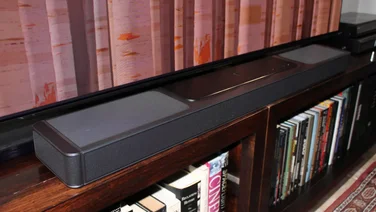To help us provide you with free impartial advice, we may earn a commission if you buy through links on our site. Learn more
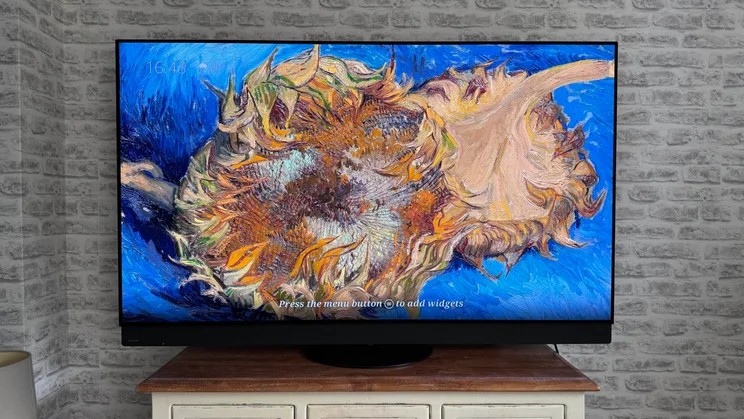
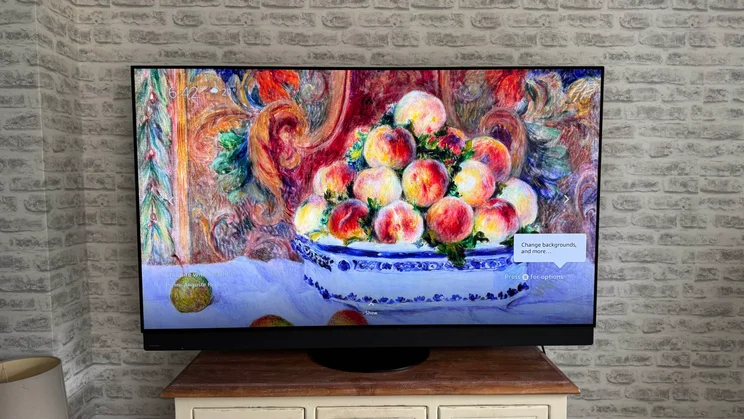
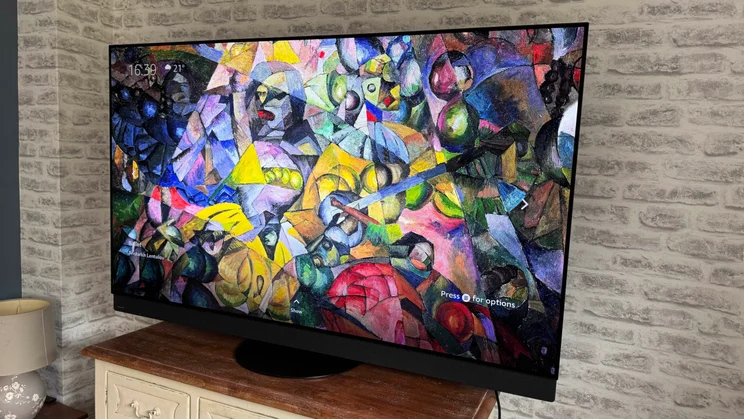
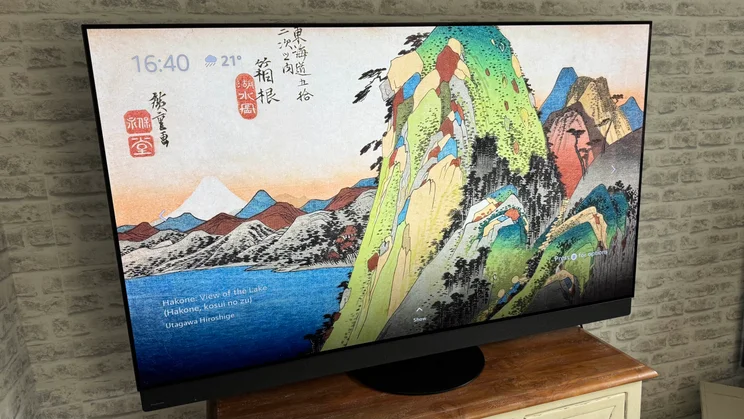
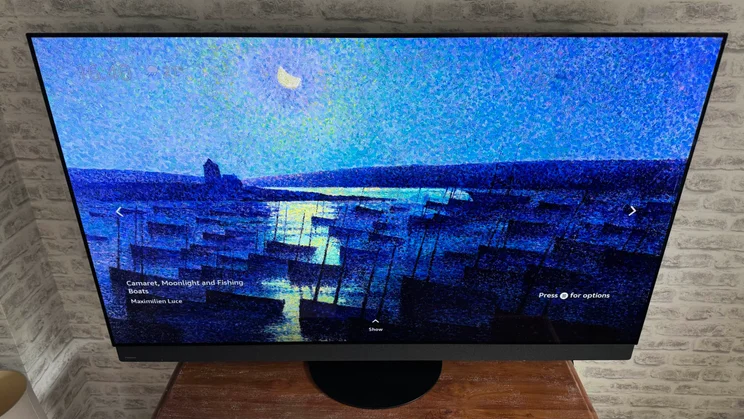
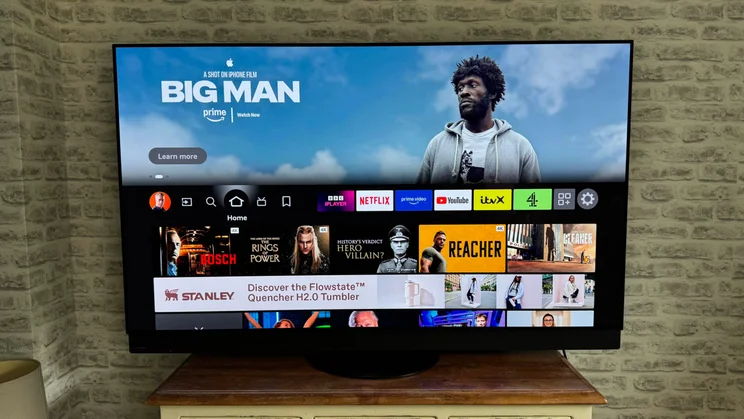
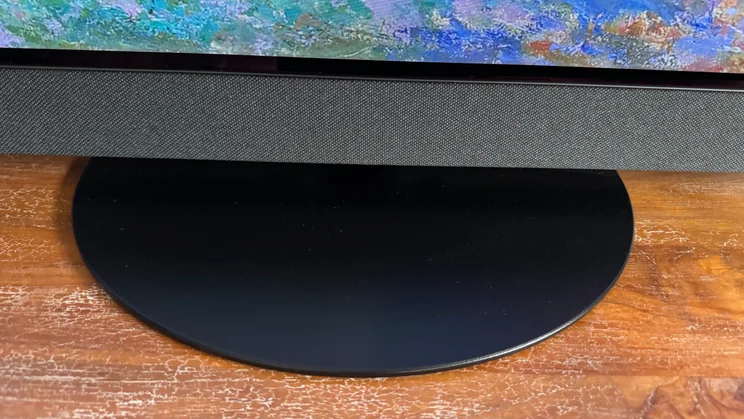
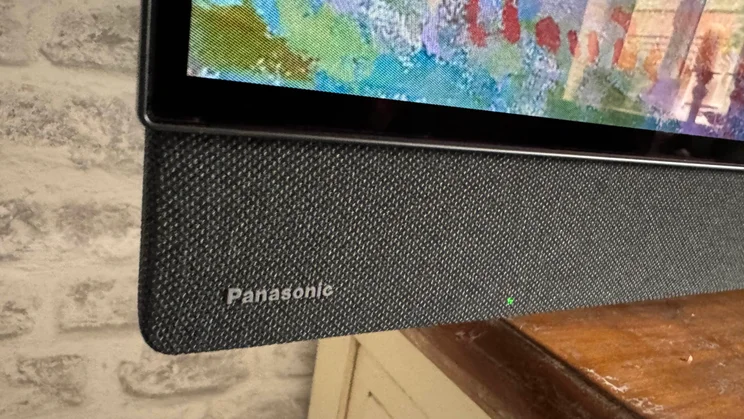
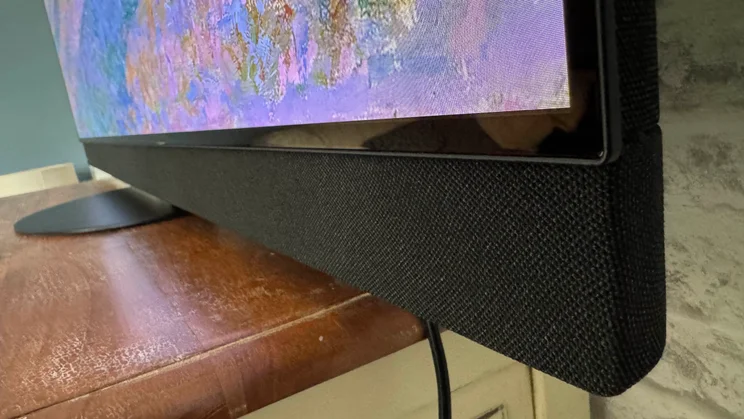

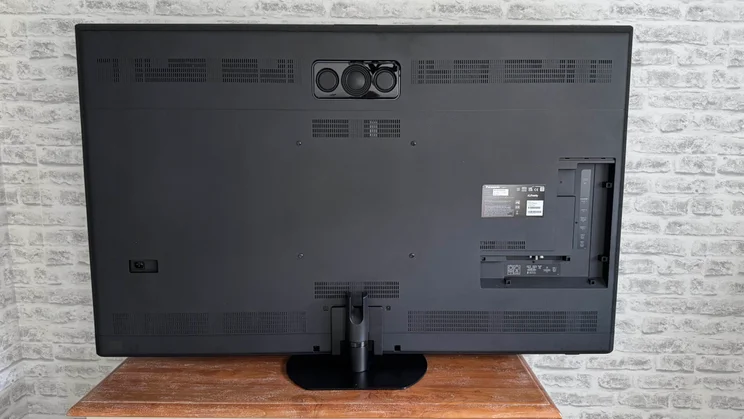
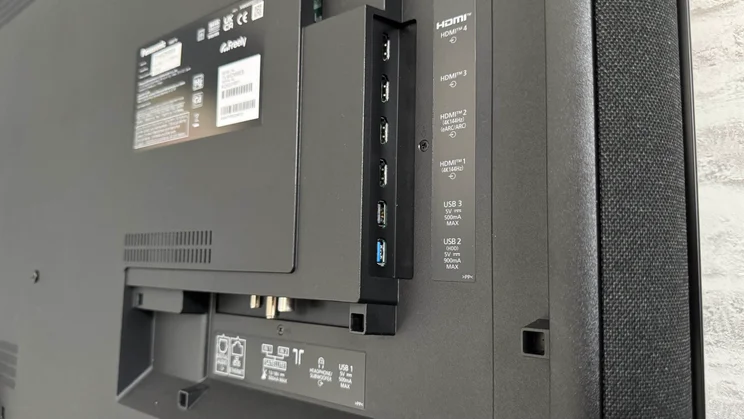
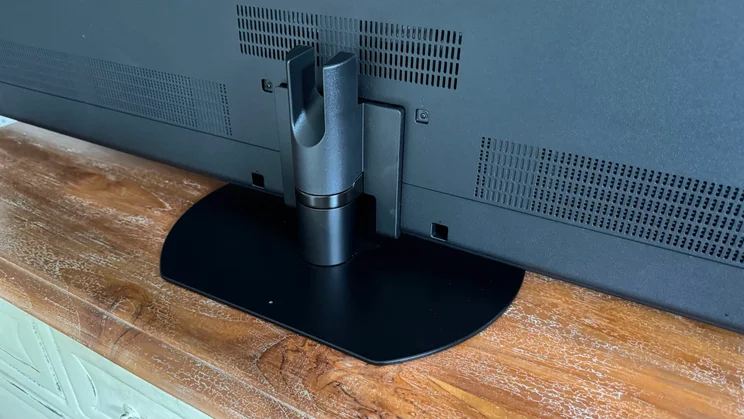
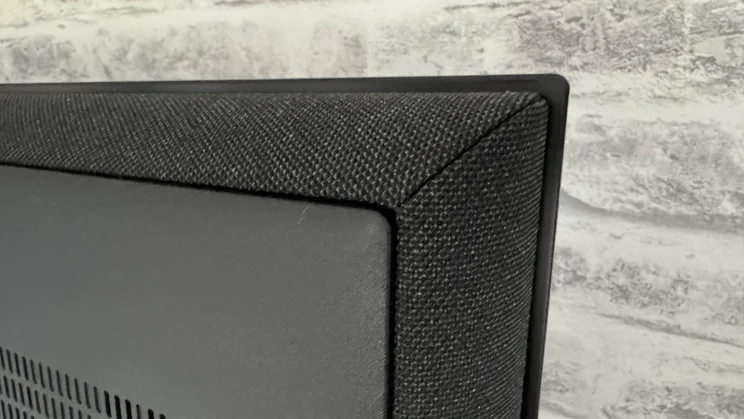
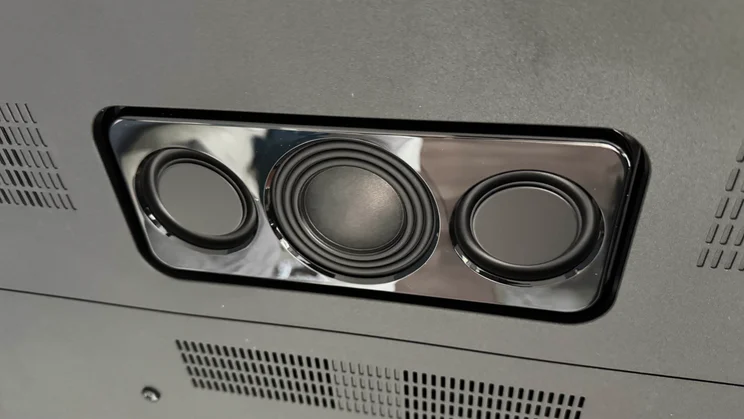
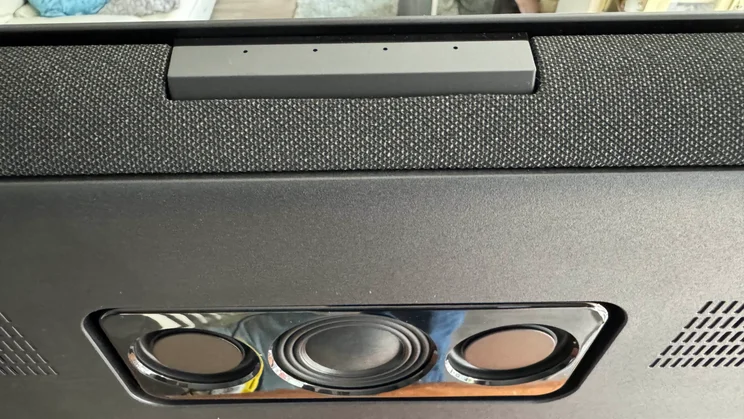
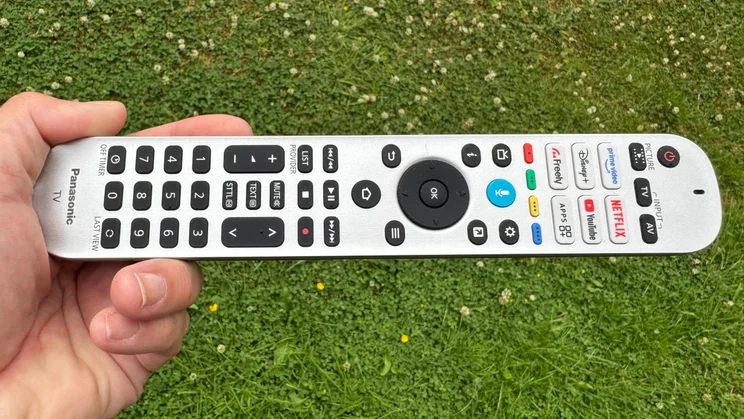
- Sensational picture quality
- Universal HDR support
- Impressive built-in Dolby Atmos sound
- Only two HDMIs carry full gaming features
- Built-in subwoofer can struggle
- Design is quite chunky
No new TV launch sets AV fan pulses racing more than the unveiling of Panasonic’s latest flagship OLEDs. Especially now that Panasonic has returned to the US, expanding its premium TV offering back into the world’s biggest home entertainment market.
Even by Panasonic’s usual high standards, though, with an all-new multi-speaker sound design and a hugely updated proprietary OLED panel, the Panasonic Z95B OLED has the potential to be something truly special.
Panasonic Z95B review: Key specifications
| Screen sizes available | 55in TV-55Z95B, 65in TV-65Z95B and 77in TV-77Z95B |
| Panel type | Primary RGB Tandem OLED |
| Resolution | 4K/UHD (3,840 x 2,160) |
| Refresh rates | Up to 144Hz |
| HDR formats | HDR10, HDR10+ Adaptive, HLG, Dolby Vision IQ |
| Audio enhancement | 360° Soundscape Pro audio system (170W), Dolby Atmos |
| HDMI inputs | 4 (2 x HDMI 2.1) |
| Freeview Play compatibility | No, but carries Freely |
| Tuners | Satellite, digital |
| Gaming features | VRR, ALLM, AMD FreeSync NVIDIA G-Sync, Game Mode Extreme, Game Control Board |
| Wireless connectivity | Bluetooth 5.3, Wi-Fi 6, Apple AirPlay, Apple HomeKit |
| Smart assistants | Amazon Alexa |
| Smart platform | Fire TV OS with Freely |
What you need to know
The Z95B is Panasonic’s flagship TV for 2025. As usual, this means it’s built on OLED rather than LCD technology, and that the OLED technology in question is seriously high-end. This year, the Z95B uses a Primary RGB Tandem OLED panel, which boasts a four-stack OLED structure with two emissive blue layers to boost brightness.
This is backed up by a new cooling system that works in conjunction with the heat sink hardware Panasonic always applies to its flagship OLED TVs. The “ThermalFlow” system aims to reduce heat-induced panel damage by circulating cooling air through a chimney arrangement on the rear of the panel.

















The second-generation iteration of Panasonic’s HCX Pro AI Processor, complete with a new Auto AI mode, controls the new OLED panel, and the Z95B supports all four major HDR formats, including Dolby Vision and HDR10+. Gaming support extends to 144Hz refresh rates, and Calman calibration features return after being absent in recent years.
In a welcome upgrade from the Panasonic Z95A, the Z95B trademark multi-speaker system is built into a new felt-covered band that runs around all four sides of the screen and incorporates a couple of rear-mounted subwoofers. This results in a far more elegant and slender design.
Price and competition
While the £2,799 needed to buy the 65in Z95B I’m reviewing here is hardly a snip, it’s actually much more affordable than Panasonic’s flagship TVs used to be. In fact, it’s only £100 more than the 65in LG G5 OLED, which also uses a Primary RGB Tandem panel but doesn’t have any additional cooling technology.
Other notable rivals are the Sony Bravia 8 II and Samsung S95F, both of which use quantum dot OLED technology, with its pure RGB colour system. The 65in models from these ranges cost £2,499 and £2,699 respectively.
The two other screen sizes the Panasonic Z95B is available in – 55in and 77in – cost £2,300 and £3,899.
Design, connections and control
The Z95B is much better looking than its predecessors. Tucking most of the speakers into that felt-covered strip that runs behind the TV’s edges has produced a significantly slimmer, much tidier 360-degree design. That’s not to say the Z95B is skinny, but the new look certainly suits wall-hanging better, and is less cumbersome to rotate on the robust circular foot mount the TV ships with.
The Z95B’s connections are plentiful, with highlights including four HDMIs, three USBs (one USB 3.0, two USB 2.0), an Ethernet port, an optical digital audio output, a digital tuner input, and a headphone output which doubles as a subwoofer line out.

















The Z95B ships with a single large, button-heavy remote control. While intimidating to look at, this remote is weighty and comfortable to hold, and sensibly puts the buttons most modern TV users will want – including six direct streaming app access buttons – up at the top where they’re more prominent.
This being a TV equipped with a Fire TV smart system, it’s no surprise to find you can control it verbally via Amazon Alexa. There’s an Alexa button on the remote, but the TV also houses a far-field microphone that enables you to interact with it directly.
Smart TV platform
Panasonic ditched its My Home Screen operating system in favour of Fire TV in 2024, and that’s proved a good decision overall. This is particularly true when it comes to content coverage, with Fire TV carrying the world’s most popular streaming services and all of the catch-up apps for the UK’s main terrestrial broadcasters.
The Z95B goes much further than that by carrying the Freely platform, which allows users to live stream any BBC, ITV, Channel 4 or Channel 5-related channel over their internet connection rather than an aerial and tuner. Freely also carries over 10,000 hours of catch-up content.

















While the integration of Fire TV into Panasonic’s traditional menu structures and vice versa runs uniquely deep, the content menus will still look winningly familiar to anyone who’s used an Amazon Fire TV Stick or even the latest Prime Video app. They’re pretty straightforward for newbies to learn their way around, too, once they’ve taken a deep breath at the initially rather cluttered look to things. The only slight annoyance is Amazon’s penchant for pushing its own Prime Video content over that of other platforms.
The Z95B has built-in support for Apple AirPlay and screen mirroring, though you don’t get direct Chromecast support like you do with TVs that use Google TV smarts.
Image quality
While the Z95B is built for high dynamic range playback, its Filmmaker Mode picture preset delivers phenomenal accuracy and refinement with SDR images right out of the box, with no manual intervention required.
The TV settles on a core white level of 111 nits that’s a great choice for accurate SDR playback, and delivers Delta E 2000 error scores of below 3.0 for every one of the key colour and grayscale tests provided by Portrait Displays’ Calman Ultimate software, G1 signal generator and C6 HDR5000 light meter testing package. Consistently achieving Delta E 2000 average errors of under three means the Z95B doesn’t diverge from the Rec709 standard to a degree that will be perceptible to even the most trained eye. No wonder the Z95B is found in more than a few film industry mastering suites.

















What’s really great about the Z95B’s Filmmaker Mode performance, though, is that it doesn’t just ‘hit the numbers’. It delivers all the core elements of picture quality so effortlessly that Filmmaker Mode pictures don’t look flat, dull or lifeless like they can on lesser TVs. On the contrary, contrast still looks gorgeous, colours still look rich, and the subtlety and detail produced in everything from the darkest corners to the brightest highlights and most vibrant colours (the TV can cover essentially 100% of the Rec709 spectrum) is sensational.
Filmmaker Mode images even look sharp and textured despite the fact that they’re usually HD rather than 4K, thanks to Panasonic’s superb upscaling engine. This has been bolstered on the Z95B by “Dual Super Resolution”, which combines AI and mathematical models to calculate the way the millions of pixels that need to be added to every upscaled HD or SD frame should look.

















While home cinema purists will already have heard enough about the Z95B’s SDR performance, I want to mention the excellent variety of options provided for people who want to watch SDR images using more of the TV’s extreme capabilities. The Normal picture setting presents SDR with substantially more brightness and much richer colours, but crucially retains a fantastic eye for balance and detail. So while the resulting pictures are no longer measurably accurate, they still look remarkably convincing and immersive in their own more vibrant way.
HDR performance
As hoped, the Z95B’s combination of new hardware and software achieves imperious results with the HDR visuals the TV has been designed to focus on.
Brightness and contrast are both spectacular. The panel hits brightness peaks in excess of 2,500cd/m2 on 1% to 5% HDR windows in Normal mode, and just under 2,100cd/m2 on the 10% HDR window, often seen as a more useful indicator of real-world experience.
While the Z95B’s brightness is at its most dazzling and intense with relatively small bright highlights of HDR images, the panel retains the best part of 400cd/m2 of brightness with full-screen bright HDR content, helping deliver an exceptionally consistent HDR experience.

















Black levels never exhibit any fluctuations or ‘floating’ during either sharp bright to dark camera shots or as the core light levels in a dark shot shift slightly, and shadow detailing is outstanding across all the key picture presets (though I suggest you avoid the over-aggressive Dynamic mode and the sometimes unnatural-looking AI Mode).
Subtle details in the brightest HDR highlights are also incredibly well handled, with no significant signs of anything being clipped out of the picture. Panasonic’s dynamic tone mapping system does limit the peak brightness of aggressively mastered (to 4,000 nits) HDR10 content a little more than some of the latest OLEDs do, but I’m not complaining when the payoff is a picture that’s borderline obsessed with bringing out every possible nuance and detail from a source.
The Z95B also reacts brilliantly to the extra HDR picture information provided by the Dolby Vision and HDR10+ formats it supports. But the images achieved from these premium HDR formats actually emphasise just how effective the dynamic tone mapping system is at optimising HDR10 to the screen’s capabilities without losing the source material’s essence.

















Colours are beautifully vibrant, but again, despite the much higher colour volume and range delivered with HDR sources (the Z95B can cover 99.71% of the DCI-P3 colour spectrum, and 83.59% of BT2020), there’s never any drop off in the subtlety with which the screen handles fine colour blends or tiny skin tone variations. And every tone across the board always looks perfectly in balance with the rest – again, provided you avoid the Dynamic preset.
The Z95B’s HDR Calman Ultimate tests produce some unusually interesting results. The first being that in the TV’s more aggressive-looking picture presets, neither colours nor greyscale are accurate at all, returning Delta E 2000 average error levels in the mid to late teens for most colour and greyscale tests. I repeat my point that, despite their lack of accuracy, the Normal mode’s pictures still feel very compelling within their own exaggerated world – but if you demand accuracy, you need to switch to the HDR Filmmaker Mode.
Every single Calman colour test in this mode records Delta E 2000 average errors of less than two. In fact, the Z95B’s Filmmaker mode is actually more accurate for HDR than it is with SDR, which is highly unusual.

















Panasonic does substantially crimp the brightness of the Filmmaker Mode to achieve such accurate colours, peaking at around 950cd/m2. It sustains this brightness on every test window size up to 25%, though, making for a startlingly consistent look, and its OLED black levels are so good that the image still looks punchy and intense.
The 4K resolution that accompanies most HDR fare is delivered with predictably spectacular precision, but at the same time, the sharpness always feels natural and a reflection of genuine source detail, rather than appearing gritty or excessively processed.
The sharpness isn’t damaged by motion issues, either. Moving objects are handled cleanly even without any motion processing in play, and while judder during camera pans can feel a touch exaggerated with 24fps films, the Minimum setting of Panasonic’s Intelligent Frame Creation system subdues the harsher effects of this hardware judder without inducing the soap opera effect or other unwanted processing side effects.
At this point, I’d usually wade through a list of flaws with a TV’s picture performance. In the Z95B’s case, though, it’s tough to find really anything negative to say that I haven’t mentioned (and dismissed) in passing already. I could maybe reiterate that Panasonic’s decision to limit brightness in the HDR Filmmaker Mode may make this a dark room-only option – but then there are plenty of other great-looking presets available for brighter viewing conditions.
To test the Panasonic Z95B OLED, I used Portrait Displays Calman colour calibration software.
Gaming
Let’s get the bad news out of the way first: only two of the Z95B’s four HDMI ports support the full range of cutting-edge gaming features. Provided you’ve only got two current-generation gaming devices to support, though, this won’t matter to you – and elsewhere, the supported gaming feature count is high.

















Refresh rates are supported right up to 144Hz, and variable refresh rates can be handled in the AMD FreeSync Premium and NVIDIA G-Sync systems, as well as the basic HDMI VRR specification. The screen will auto-switch into its low-latency game mode when a game source is detected, and despite the sophistication of its panel and processing engine, in that mode, it only takes 12.6ms to render images. A dedicated Gaming menu is available, too, offering details on the incoming signal and a few handy gaming resources and aids.
The beauty of the Z95B’s pictures translates perfectly from video to gaming. Detailing is immense, contrast is perfect, colours are rich but full of the subtleties today’s AAA game creators love to include, and motion is handled immaculately across the full range of refresh rates today’s games can deliver – complete with zero tearing if a title has fluctuating frame rates. The whole experience feels fantastically fluid and responsive, too.
Sound quality
Panasonic’s decision to fit its expansive sound system into a much more compact and tidy home isn’t without sound quality compromise. The new subwoofers can be a touch droney, not always reacting swiftly and accurately to changes in bass frequency or rapid bass rhythms. A little distortion can emerge during really deep and extended bass rumbles, too, and deep male voices can sound like they’re coming from the bottom of the screen.

















Fortunately, none of this stops the Z95B from sounding far superior to the TV world at large. The speakers ranged around the TV’s four sides create a sound stage with good width and even height, into which Dolby Atmos sound mix effects are thrown with convincing placement and spatial accuracy. The soundstage isn’t quite as large as that of the Z95A, but the way staging within this slightly smaller area is controlled is tighter, creating a more compelling sense of detail and immersion.
The forward-facing soundbar element that runs beneath the screen creates a pleasingly forward and direct sound that also delivers real bite to hard impact sounds and helps to create a soundstage that feels genuinely three-dimensional rather than just a flat wall of sound.

















Don’t forget, too, that you can steer the Z95B’s sound directly towards your particular seating position using the available audio customisation options, meaning that you can place the sonic sweet spot wherever you want it to be.
Verdict
The Z95B is a tour de force from Panasonic. It takes decades of picture quality know-how developed right through from Panasonic’s plasma days, mixes in the experience the brand has gained during years spent working with Hollywood’s creative industry, throws on a sprinkling of the latest, clearly very carefully trained AI, and then serves all this up on cutting-edge hardware.
Some may still wish they could get the picture quality of the Z95B without paying for a sound system they may not need if they have a good external audio system. But it’s hard to get stuck on this point when you’re talking about a TV that delivers the most immaculate pictures we’ve seen from a television this year.






